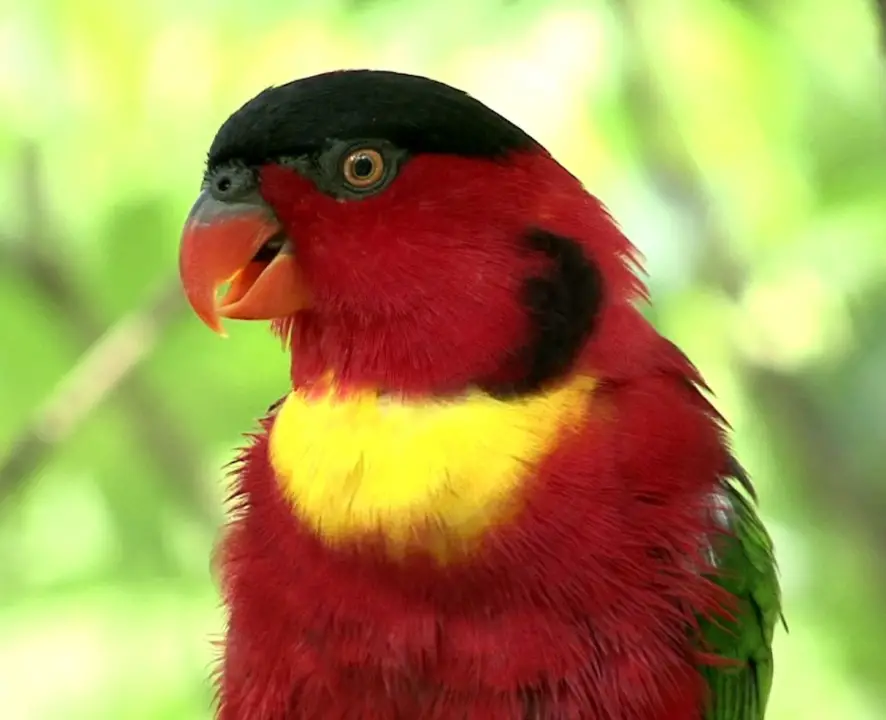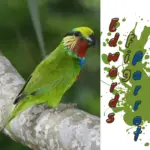
Yellow-bibbed Lory 28 cm; 153–225 g. Mainly red; bill orange; crown to nape above a line through eye black; blackish markings on sides of neck linked by narrow yellow line across lower throat;
wings green above with white at the bend, below blackish with broad red patch across the underside of primaries; underwing coverts, flanks, and thighs purplish-blue; tail tipped green above, dusky yellow below.
Immature lacks black and yellow on the neck and throat.
Systematics History
Monotypic.
Subspecies
Monotypic.
Distribution
E Solomon Is: Savo, Guadalcanal, Malaita, Makira (San Cristobal), Ulawa, Ugi, Santa Ana, Santa Catalina and Rennell.

Habitat
Canopy of primary forest, second growth, and sometimes coconut plantations, at all altitudes; commoner in hills, especially mist forest, than lowlands, and in primary habitats than disturbed areas.
Diet and Foraging
Yellow-bibbed Lory eats Pollen, nectar, fruits, small seeds, and caterpillars were recorded.

Sounds and Vocal Behavior
Quite vocal and has an extensive repertoire, mainly comprising piercing whistles, more subdued and mellower complex notes, nasal flat-pitched notes, and a fast series of single notes repeated. Possibly imitates other bird species.
Yellow-bibbed Lory calls a husky “chi-rwhe-rwhe-rwhe”, “chi-whe-chi-whe” or similar.
Breeding
No information except gonads undeveloped in Jun, Jul, and Nov; Yellow-bibbed Lory egg size (in captivity) 29·7–30·3 mm × 23·9 mm (n = 2).
SOURCE:Pets Store
Conservation Status

Not globally threatened (Least Concern). CITES II. A BirdLife “restricted-range” species. Generally fairly common, and the commonest large parrot on Guadalcanal and San Cristobal. A popular local cagebird and occasionally shot for food. Rare on Rennell.



















